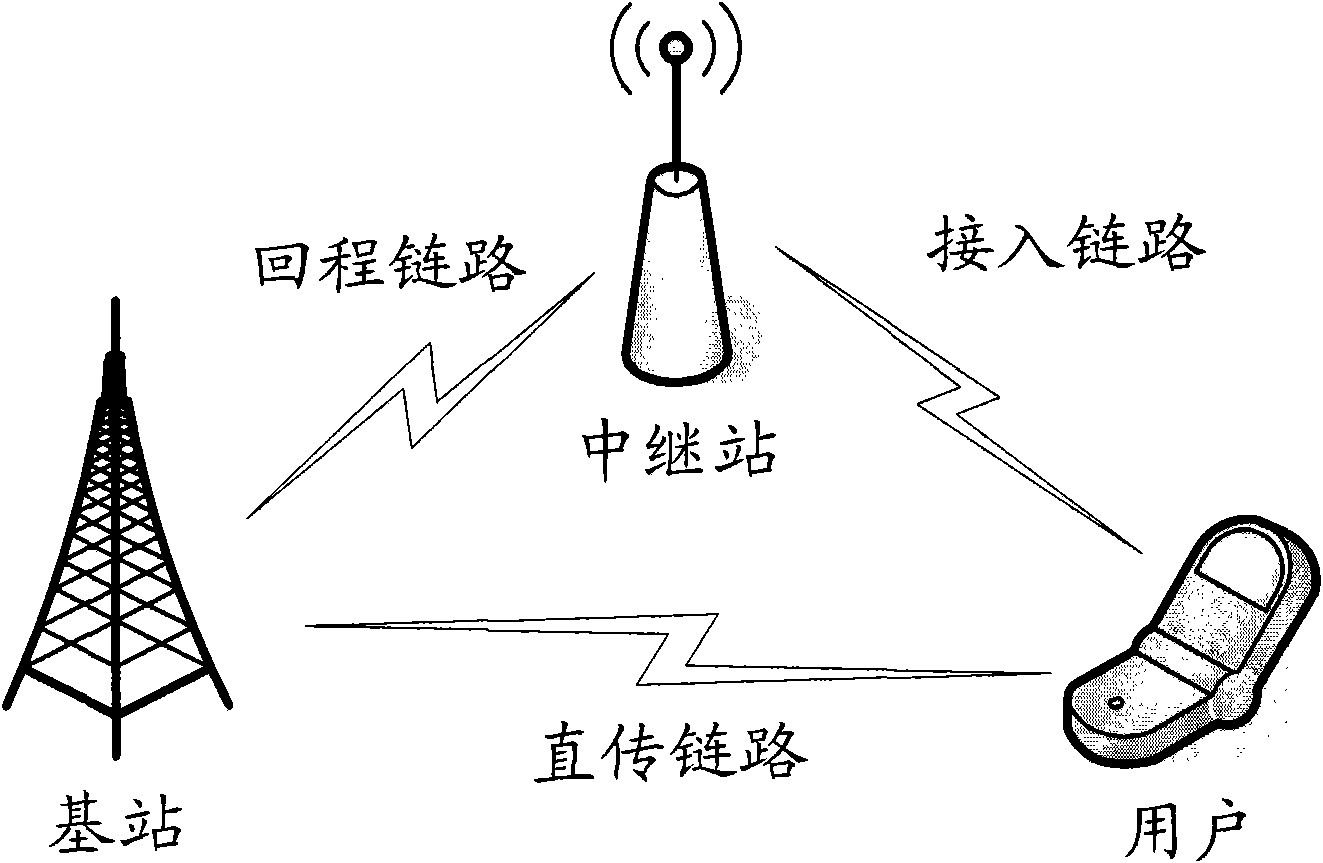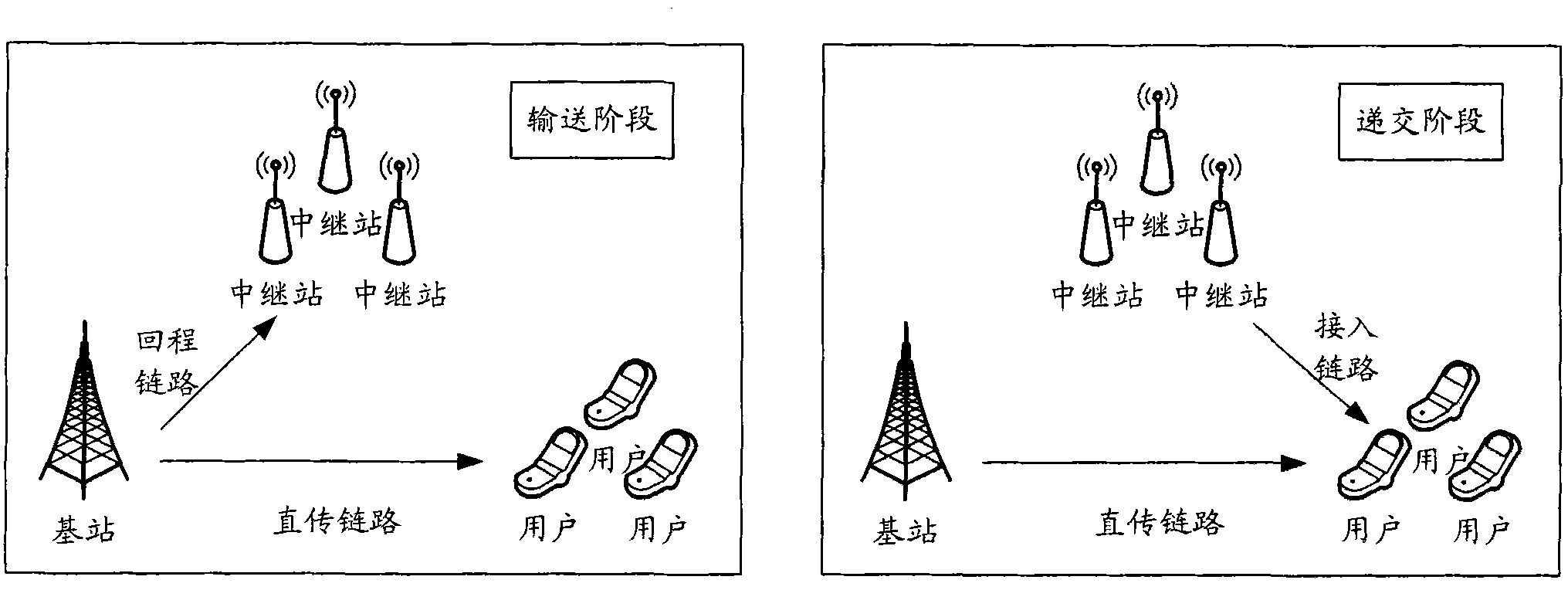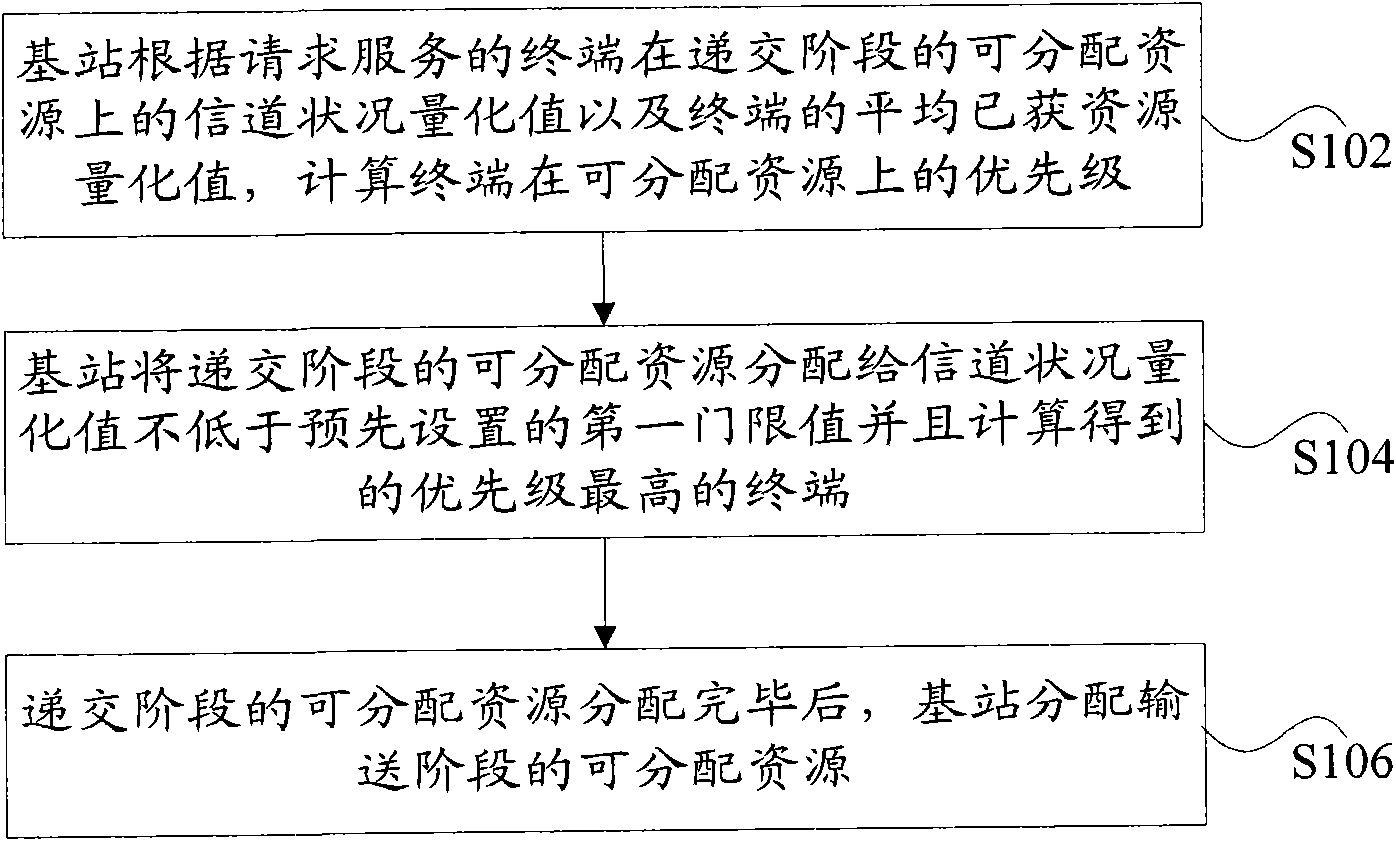Relay network system and downlink resource allocation method thereof
A technology of resource allocation and relay network, applied in the field of communication, can solve problems such as insufficient utilization of resources and limitation of relay network performance.
- Summary
- Abstract
- Description
- Claims
- Application Information
AI Technical Summary
Problems solved by technology
Method used
Image
Examples
Embodiment 1
[0111] In a relay network with 1 base station eNB, 2 relay stations RN1, RN2, and 3 users UE1, UE2, UE3, user 1 and user 2 are served by RN1 and RN2 respectively, and UE3 is directly served by the base station. The system can allocate resources to 5 RBs, denoted as RB1, RB2, RB3, RB4, RB5, and the average obtained resource quantization value of user i is known as T i . In the submission stage, the quantized value of the channel condition of user i on RBk is SINR2 U i,k , have exceeded the basic threshold THb2; in the delivery phase, the quantized channel status value of user i on RBk is SINR1 U i,k , the channel status quantization value of relay station j on the RBk in the transmission phase is SINR1 R j,k , have exceeded the basic threshold THb1.
[0112] 1. Firstly, the resource allocation in the submission stage is carried out. For RB1, the priorities of the three users are respectively obtained according to the following methods:
[0113] P ...
PUM
 Login to View More
Login to View More Abstract
Description
Claims
Application Information
 Login to View More
Login to View More - R&D
- Intellectual Property
- Life Sciences
- Materials
- Tech Scout
- Unparalleled Data Quality
- Higher Quality Content
- 60% Fewer Hallucinations
Browse by: Latest US Patents, China's latest patents, Technical Efficacy Thesaurus, Application Domain, Technology Topic, Popular Technical Reports.
© 2025 PatSnap. All rights reserved.Legal|Privacy policy|Modern Slavery Act Transparency Statement|Sitemap|About US| Contact US: help@patsnap.com



